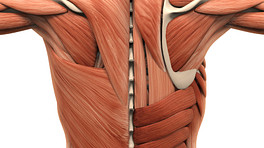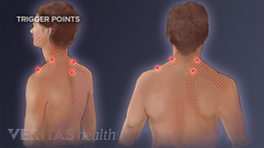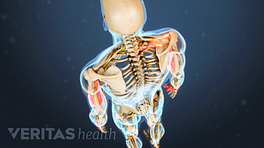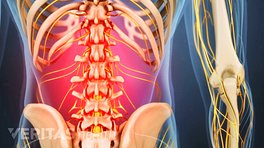Myofascial therapy relieves soft tissue restrictions that cause pain. Some causes of chronic myofascial pain or low back pain are easier to diagnose than others: trauma (such as a car accident or fall), cumulative posture misalignment or mechanical deficits, a compressed nerve from a herniated disc, or inflammatory conditions.
When pain is caused by myofascial tightness within the fascial system (the web of connective tissue that spreads throughout the body and surrounds every muscle, bone, nerve blood vessel, and organ to the cellular level) the diagnosis is more difficult, as fascia restrictions do not show up on MRI scans or X-rays. Yet, those restrictions can play a significant role in creating pain and malfunction in the structure of the spine, extremities and organs.
See Chiropractic Treatment for Myofascial Pain Syndrome
What is Myofascial Therapy?
Myofascial Therapy (also known as myofascial release therapy or myofascial trigger point therapy) is a type of safe, low load stretch that releases tightness and pain throughout the body caused by myofascial pain syndrome, which describes chronic muscle pain that is worse in certain areas known as trigger points. This article provides an overview of the treatment technique, including:
- What the myofascial system consists of
- Conditions and symptoms myofascial therapy can treat
- A description of the treatment and who typically provides it
- Results and outcomes of a course of myofascial therapy
In This Article:
- Myofascial Therapy for the Treatment of Acute and Chronic Pain
- Myofascial Release Therapy
What is Fascia?
Fascia is a three-dimensional web that permeates the whole body. The best way to envision the expanse of the fascial system is to think of it as a layer of connective tissue (similar to a tendon or ligament) that starts with the top layer directly below the skin, and extends to two deeper layers.
When the fascia is in its normal healthy state it is a relaxed and supple web - like the weave in a loose-knit sweater. When it is restricted, it is more rigid and less pliable, and can create pulls, tensions, and pressure as great as 2,000 pounds per square inch. The fascia is a continuous system, running from the bottom of the feet through the top of the head and has three layers:
- Superficial fascia, which lies directly below the skin. It stores fat and water, allows nerves to run through it, and allows muscle to move the skin.
- Deep fascia, which surrounds and infuses with muscle, bone, nerves, and blood vessels to the cellular level.
- Deepest fascia, which sits within the dura of cranial sacral system.
Fascia restrictions can occur within any or all of the layers.









